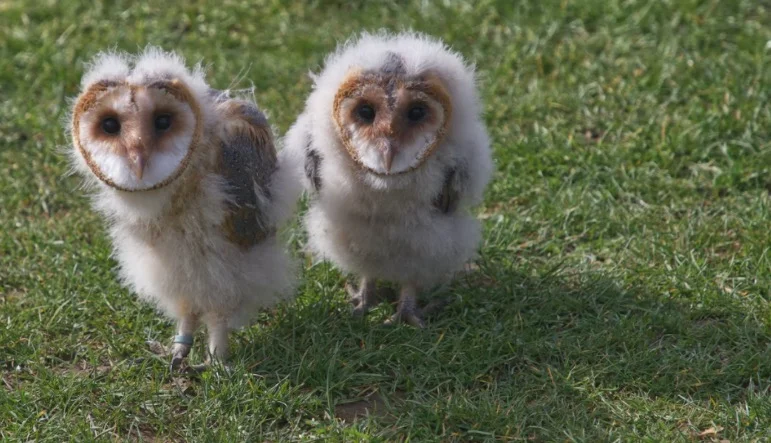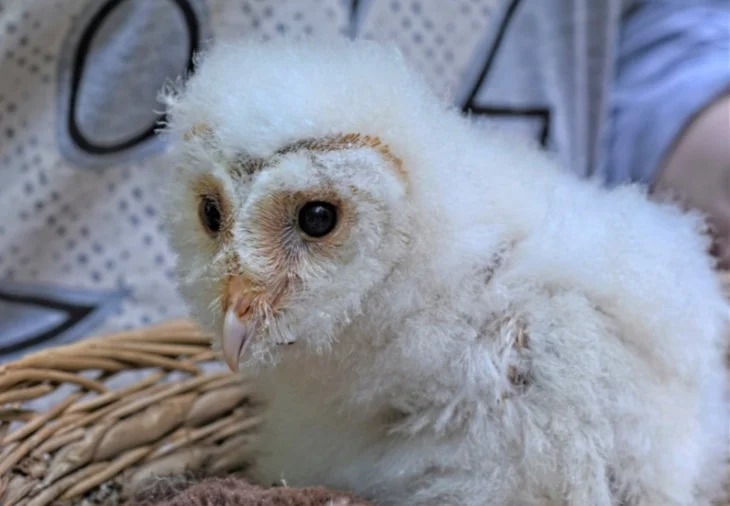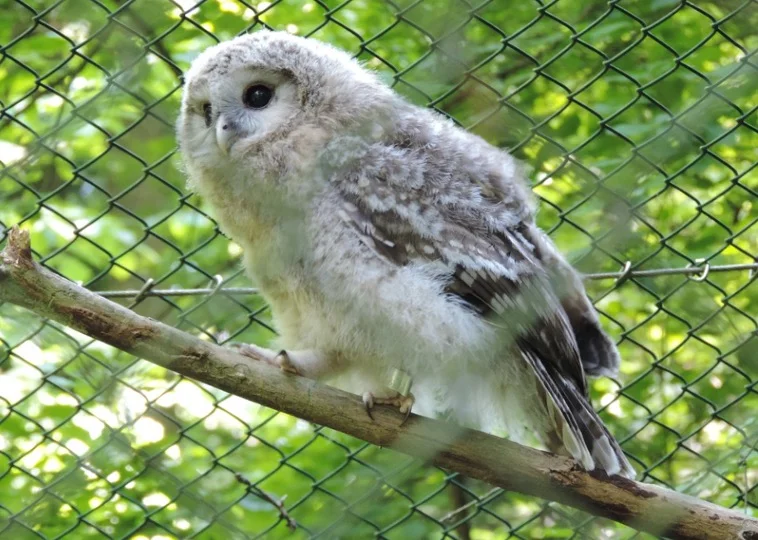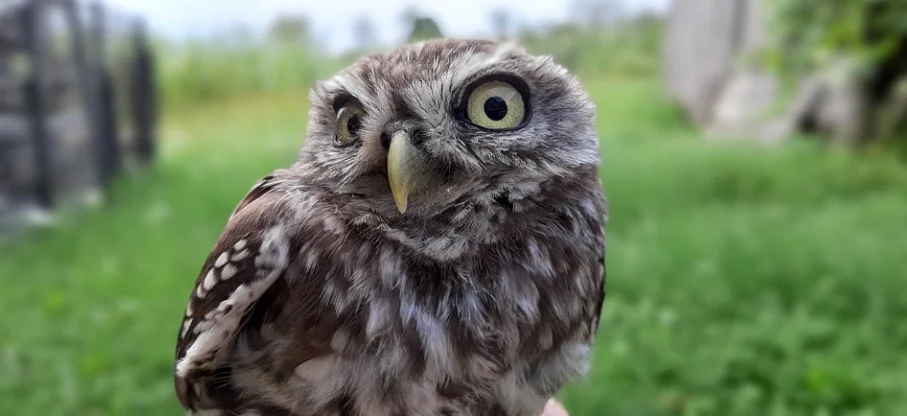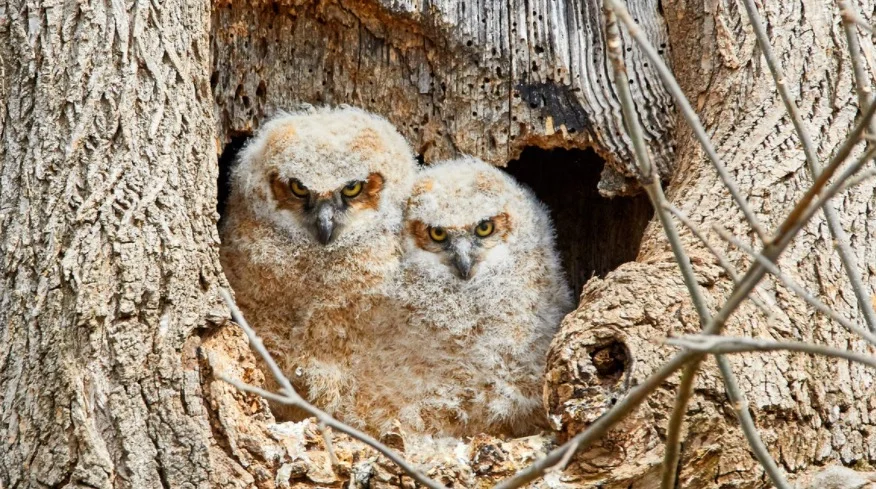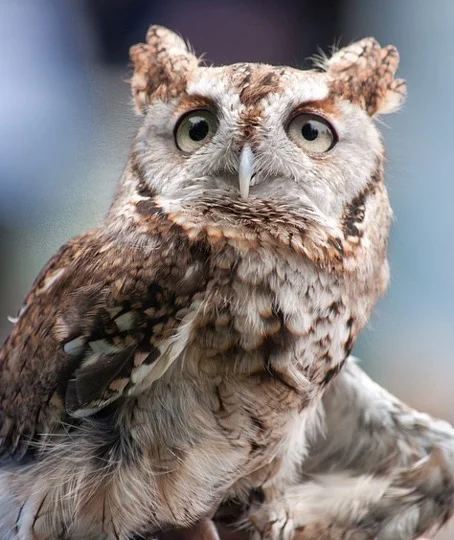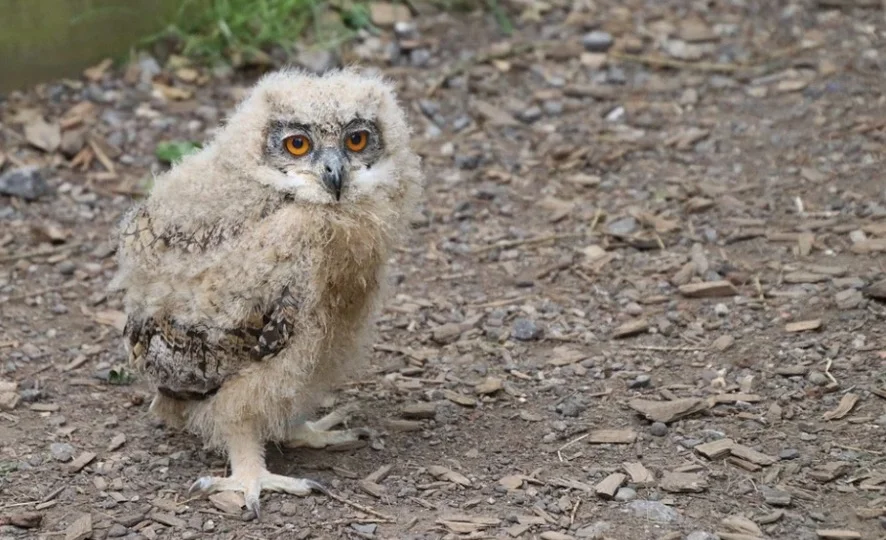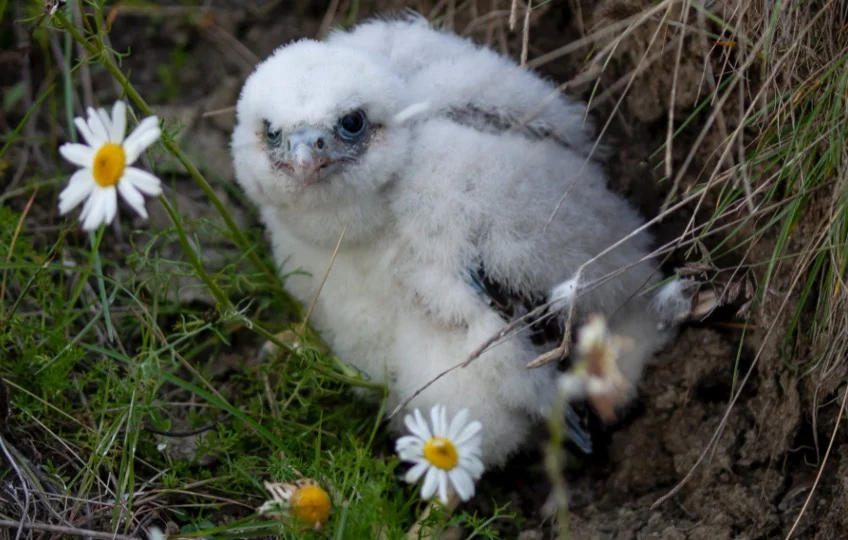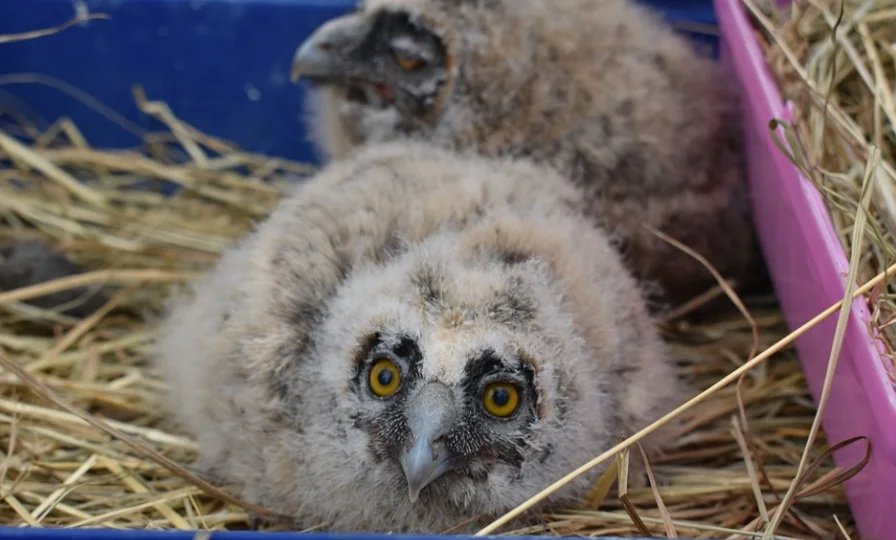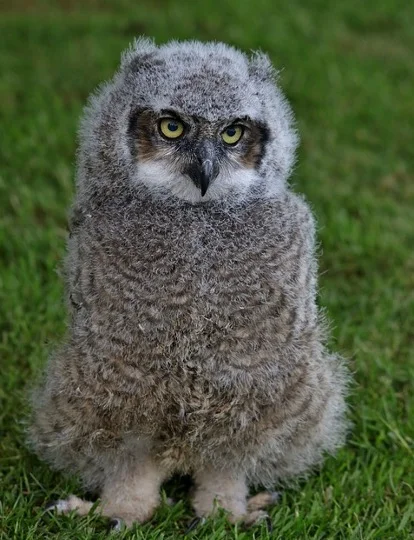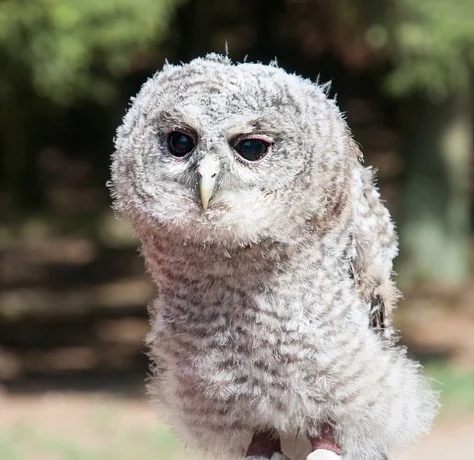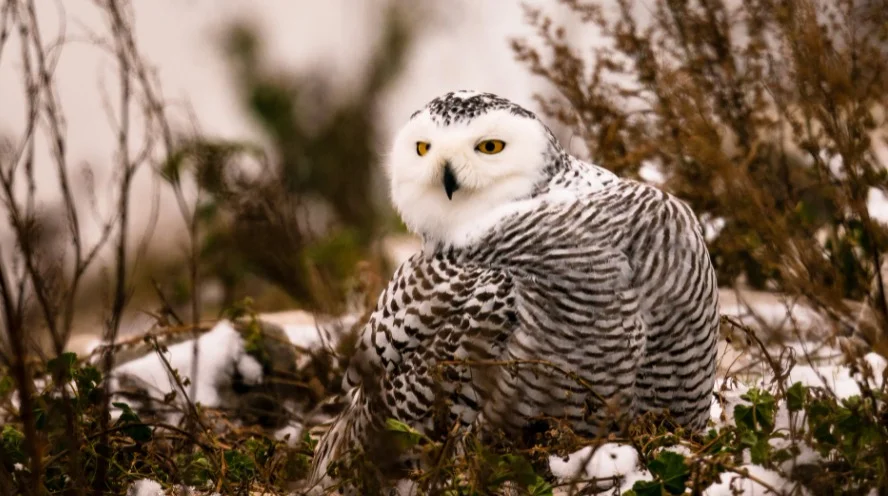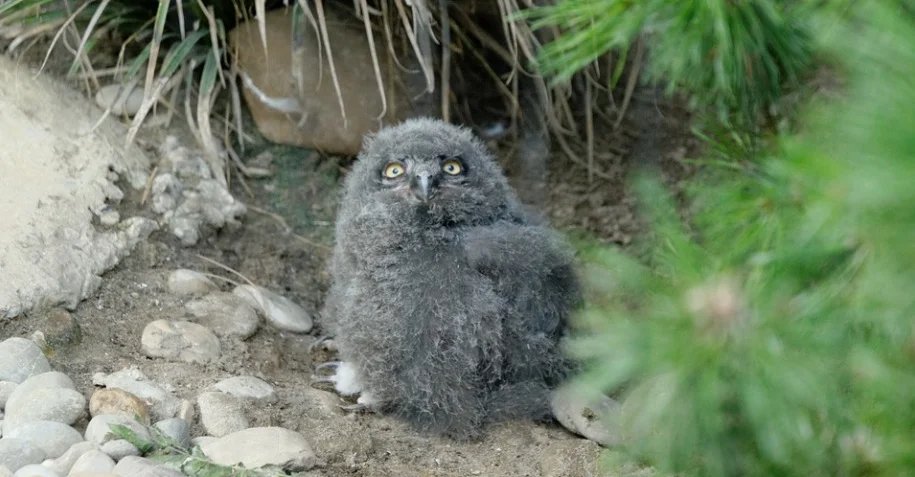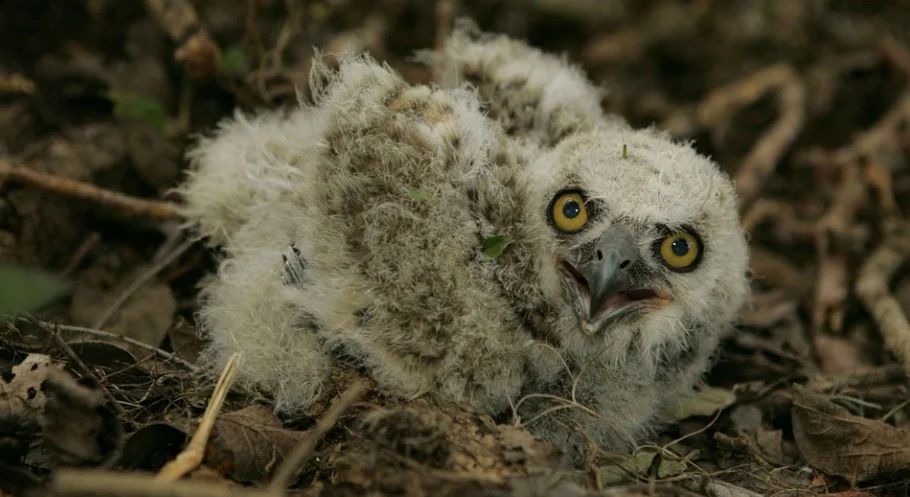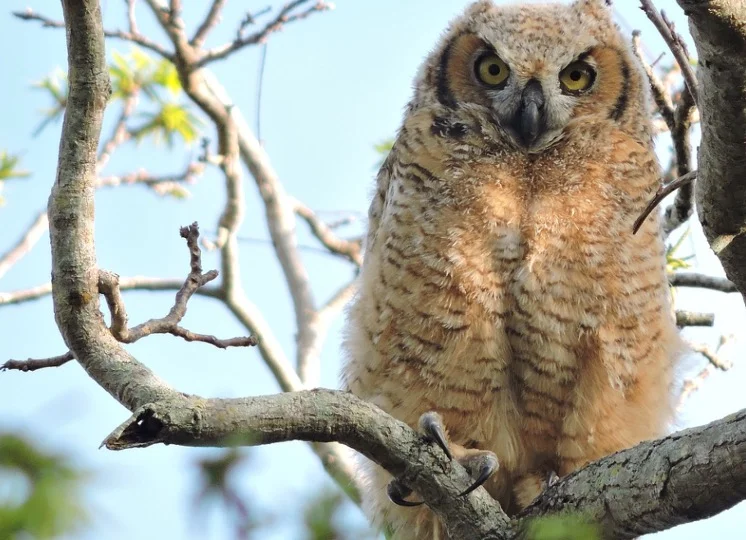Baby Owl: All The Facts, Care, and Pictures
Owls are solitary creatures. In fact, anyone would be lucky to see an owl in the wild; instead, you’re more likely to hear their characteristic hooting sound! The owls isn’t just beautiful, but they are also one of the most widely distributed birds in the world, so much so that it can be found throughout all of Europe and North America.
And, if you’re lucky enough to see one of these birds in person, you’ll notice right away that there are some distinct physical differences between the adults and their young ones, which are called owlets.
A baby owl sighting would be even more unlikely, so we’ve put together this post with all you need to know about baby owls, as well as lots of baby owl photographs. Owlets, like other newborn birds, are unique from mature, adult birds.
These young birds have a lot of soft, fluffy down and no obvious markings, but their face discs are one of the first plumage traits to emerge. The form, size, as well as color of the disc can be quite helpful in identifying an owlet.
Although some juvenile owls have somewhat different color than older birds, eye as well as beak color can also be used to distinguish newborn owls. Owlets may have small fluffy nubs on their heads with ear tufts, but they lack the full form, color, as well as dexterity that mature owls have with their ear tufts.
Wings can grow early in owlets, and the young birds’ first flying feathers may have barring or other patterns when their bodies are still covered with indistinct down.
What Does A Baby Owl Look Like?
Most newborn owls are incredibly fluffy, coated in a thick layer of white or grey down. They frequently have heart-shaped heads and black button-like circular eyes. From the fluff protrudes a hook-shaped beak.
Baby owls also have a prominent egg tooth, which is a sharp protrusion from their beak that permits them to penetrate the egg when hatching. These vanish after a week or so of hatching. Some newborn owls have an unusual appearance, particularly Barn owls, which have lengthy faces that contrast with their white fluffy bodies.
Baby Barn Owl
Baby barn owls are adorable and easy to spot if you know what you’re looking for. When they first hatch, baby barn owls have white tufts of feathers on their heads that make them look like furry little aliens.
They also have black eyes, which remain that way until the owl reaches maturity at about two months old. Baby barn owls typically stay with their parents until they are between 4 and 8 weeks old, at which point they take off on their own to start finding food and territory of their own.
Baby Snowy Owl
Snowy owls are different from all other owl species, which is why their juvenile coloration is fascinating. When snowy owlets hatch out, they’re pure white with black eyes and feet! Because baby snowy owls look like little balls of down, they’re even called puffballs.
The creamy white feathers will later turn grey as snowy owlets grow older and larger. But first they go through something called molting: shedding old feathers to reveal new ones underneath.
Baby Burrowing Owl
The Baby Burrowing owl when born are very tiny, and very cute. The adult burrowing owls (Athene cunicularia) is a small owl, about 13–19 cm (5.2–7.5 in) long and 50-72 g (1.8-2.5 oz) in weight with long wings and a long tail. The Burrowing owl has long ear tufts that resemble horns which it can erect when alarmed.
Baby Great Horned Owl
Are you ready to meet them? If so, then you’re in for an adorable treat! The picture of baby great horned owl is too cute to miss, and it’s sure to leave your heart filled with joy. If you love owls, then you definitely need to see these great horned baby owls doing what they do best – being absolutely adorable. Explore baby great horned owl’s new world as they learn how to hunt and fly, and fall in love with these amazing creatures!
Baby Screech Owl
Screech owlets are born with their eyes closed. If you’re lucky enough to be around when they open, prepare to be amazed by tiny orbs that are almost human in appearance. They have mottled black and white markings with yellow-orange irises, and many look as if they’re staring right at you—or into your soul.
That piercing gaze has earned them another nickname: The Demon Owl. Their eyes start out light blue or green, changing within weeks to yellow or orange.
What Is A Baby Owl Called?
Baby owl is popularly known as owlet. An owlet is a tiny baby owl that has not yet gained its full adult plumage as well as is still dependent on its parents for nourishment, care, as well as security.
Owlets do not normally leave the nest for long since they are unable to care for themselves entirely, but as they grow bigger, they will investigate the area around the nesting spot as well as may even be discovered on the ground.
How Big Are Baby Owls?
Even the owlets of the biggest owls, such as the Great Horned owl, Snowy owl, as well as Eurasian Eagle owl, are rather little in comparison to the size of these birds. Snowy owl chicks, for example, stand just 6.5cm (2.5in) tall. They reach a height of around 2.5 feet when fully grown!
It’s the same thing with Great Horned owls, who are only about 3 inches tall at birth. Owl chicks develop at an incredible rate, yet they are among the tiniest as well as most defenseless of any young birds. This is common in birds of prey, as well as it means that the initial few days of life are crucial to long-term survival.
What To Feed A Baby Owl?
Small owls mostly eat insects as well as other invertebrates. The Eastern Screech owl, for example, consumes beetles and crayfish along with mice, voles, shrews, as well as birds, but the Elf Owl consumes beetles, moths, centipedes, crickets, as well as scorpions. Some of the smaller owls have been observed hunting as well as killing birds their own size.
How Often Should You Feed A Baby Owl?
Dead mice or chicken chicks, available frozen at pet stores as well as completely defrosted before usage, are the best meal for baby owls. Every 24 hours, a normal owlet should consume 2-3 day-old chicks or 4-5 mice. Moisture is obtained by owls from their prey.
Can I Feed An Owl Raw Chicken?
Owls can’t eat vegetables or fruit, they can’t eat bread, and NO, they can’t eat chicken breast from the grocery store! NO! even if it is organic! Every year, owls die as a result of people wanting an owl as a pet but being unable to tolerate its natural diet.
What Do Baby Owls Eat?
Owls are virtually entirely carnivorous, which means they only eat meat. Larger owls typically hunt on mammals, reptiles, birds, as well as fish, whilst smaller owls mostly prey on insects, arthropods, as well as tiny rodents. Baby owls devour everything their parents put in front of them. They’ll rip food into little parts that the owlets can eat whole.
How Do Owls Feed Their Chicks?
During the owlet’s first few weeks, the male usually takes on the job of hunter, bringing food to feed both the mother as well as the owlet. This meal will be ripped apart by the female into tiny bits that the chick can consume whole.
Owlets develop at an incredible rate as well as may fast consume the same diet as their parents. Because the older chicks are the biggest as well as strongest in the nest, they are normally fed first, potentially leaving the tiniest as well as newest babies to suffer if food is short.
How Much Do Baby Owls Weigh?
Even huge owl species have offspring that weigh barely 40g to 60g (2oz) at birth. A typical chicken chick may weigh roughly 30g, whereas a duckling may weigh around 50g. Babies of the Great Horned Owl weigh roughly 35g (1.2oz).
Owllets, on the whole, are quite little! The Elf owl as well as Pygmy owl are two of the world’s tiniest owls, weighing just 40g (1.5 oz) when fully mature, as well as their offspring weigh only 4g (0.14oz)! They are only little bigger than a Bumblebee.
What Do Juvenile Owls Look Like?
In their first month, owl chicks develop and gain weight at an alarming rate. Between days 14 to 28, owlets’ weight can easily double, and their features become flatter as well as more prominent. The Great Horned owl weighs just 35g (1.2oz) at birth but grows to 800g (28oz) in about a month!
The rich fluffy down starts to give way to more typical adult feathers, but the down will last at least 2 months. Juvenile owls may fledge the nest before losing all of their baby feathers, but they will most likely resemble adult owls after around 14 weeks.
When Can Baby Owls Fly?
Some owlets, such as the Screech owl, are ready to fly in less than a month, while others, such as the Great Horned owl, might take up to 2.5 months.
Owls, like many other birds of prey, are ‘born ready’ as well as mature swiftly, learning to fly as well as hunt instinctively rather than by observing their parents. Owl chicks are remarkable in how fast they become independent of their parents.
Do Owls Reuse Nests?
Owl nests are often too inadequate to reuse because owls are not known for their nest-building ability! Instead, owls are opportunistic nesters, meaning they will nest in any adequately safe area. If they can prevent it, they will avoid making a nest at all, preferring to nest in tree hollows or abandoned structures. They’re also quite good at snatching other birds’ breeding locations.
Do Owls Abandon Their Babies?
Despite the seeming rapid transformation from owlet to owl, owl parents are devoted to their kids. They will not abandon them if they are touched by humans, as well as they will not quickly quit a nest if other predators visit it.
When Do Baby Owl Fly?
Baby owls are usually unable to fly, although they may have left the nest to develop their wings as well as legs by investigating surrounding branches or rocks, climbing or bouncing about, a process known as “branching.”They may perch in strange places or even rest straight on the ground, oblivious to the fact that they are in plain view of predators.
They may be intrigued about adjacent items, even other animals, as well as may attentively explore their new world, moving their heads around to see things from different angles. Young owls frequently congregate with their siblings, as well as it is not uncommon to observe many owlets together.
What Are Juvenile Periods In Owl?
Varied owls have varying juvenile phases as well as progress through the owlet stage at different speeds. Smaller young owls mature faster as well as may be indistinguishable from adult birds within a few weeks after hatching.
Larger owl species, on the other hand, may take many months to grow out of the owlet stage as well as acquire total independence. Overall health, food availability, environment, as well as stress can all have an impact on how rapidly a young owl grows.
What You Should Do If You Find A Baby Owl?
Mature adult owls may be very protective of their young as well as have been known to fight other birds, big creatures, as well as even humans if they sense a threat. Birders should always be cautious as well as preserve their distance when viewing owlets to prevent stressing the young birds or antagonizing their parents.
If a juvenile owl looks to be in trouble or is injured, it is recommended to seek help from a professional wildlife rehabilitator, bird rescue group, or other wildlife authorities to ensure the bird’s safety as well as health.
Birders should not attempt to capture or rescue a young owl on their own since inappropriate handling might lead to more complications or damage.
Furthermore, juvenile owls may be inexperienced as well as immature, but their talons as well as beak are still sharp as well as strong, as well as even young owls may cause significant damage when scared or frightened. Children as well as dogs should also be kept away from newborn owls to reduce stress as well as the possibility of owl or observer injury.
Do Owls Need To Drink Water?
Owls receive their water from the corpses of the animals they consume, thus they don’t drink from pools of water very often. The bird consumes around a gram of water for every gram of fat it consumes. Having saying that, an owl will occasionally sip water when bathing.
How Long Can Baby Owls Go Without Food?
How long can owls survive without eating? Many adult birds will need to be force-fed during short-term care (up to 10 days), although others, particularly nestlings, may be feeding willingly within 12 hours.
Do Baby Owls Sleep Face Down?
As a result, they sleep on their backs. Many bird species are born with heads that are overly large or too heavy for their bodies. However, since their heads are so weighty, newborn owls sleep facing down. Younger owls, on the other hand, have difficulty doing so as well as must lie down when napping.
What Happens If You Find A Baby Owl?
If you leave the young owl alone, it will travel along the ground until it finds a tree that appears to fit it. It will then flap its wings as vigorously as it can as it walks up the tree’s side. It will ultimately find a horizontal branch as well as move out to perch on it.
How Long Do Baby Owls Stay With Their Mothers?
Baby owls will stay in the nest for around six weeks after hatching, depending on the species.
How Many Babies Do Owls Have At Once?
In general, owls lay between 1 as well as 13 eggs per species, with most species laying 2–5 eggs. The first egg is deposited, as well as the process of incubation starts.
Do Owls Mate For Life?
Male as well as female barn owls frequently mate for life. Every spring, they return to the same nest location as well as perform complex courtship rituals like as courtship flights, cries, as well as food offers to renew their pair connection.
Do Baby Barn Owls Are Born Without Their Spots?
Baby barn owls don’t get their spots until they are 3 weeks old. Until then, they are adorable, downy white fluff balls. If you saw one in real life you would probably think it was actually a very large mouse, but it is indeed an owl!
They have huge eyes that let them see perfectly in low light which is why they can be out at night and hunt for food. Their vision is 4 times better than human vision, so night doesn’t bother them at all.
Do Baby Barn Owls Are Great Hunters From Birth?
By 16 days old, they will leave their nest box and hunt on their own. In fact, baby barn owls are such great hunters that they have been known to catch full-grown sparrows in flight!
Do Baby Barn Owls Exhibit Bobbing Behavior?
Baby barn owl wag their heads from side to side, ruffling their feathers. They do this when they are hungry, signaling to parents that they need food. In fact, baby barn owls have been known to use bobbing as an effective way to get attention; they’ll even use it on humans!
Do Baby Barn Owls Live In A Nest With Their Parents?
Barn owls build their nests on ledges, in holes in trees, or on window ledges. The parents take turns incubating their eggs and feeding their young. If a baby barn owl falls from its nest or gets separated from its parents, contact your local wildlife organization to learn more about caring for it.
Do Baby Barn Owls Looks Different From Adult?
Floppy ears, big eyes, and pink toes. While barn owls don’t have teeth, baby barn owls are born with serrated beaks that need to be sharpened on their mother’s legs before they can start eating. Another characteristic that sets baby barn owls apart from adult barn owls is their feathers, which will become more mottled and brown as they get older.
